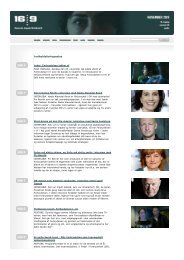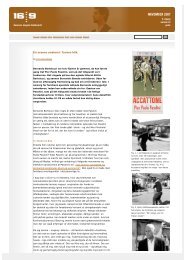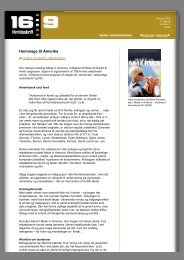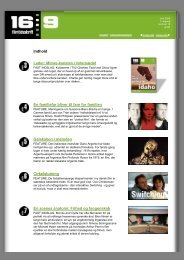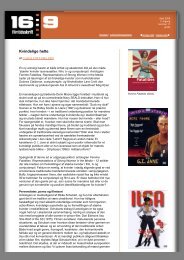You also want an ePaper? Increase the reach of your titles
YUMPU automatically turns print PDFs into web optimized ePapers that Google loves.
command. Then the camera tracks and pans with Stefan so as tomeasure the length of his walk from the compartment to the ticket kioskwhen he goes to 'talk to the engineer'. Finally, in each instance, afterStefan's return towards the compartment the camera stays with themechanics to detail the labour of illusion-making in a process fromwhich Stefan too is excluded.This scene stays within the relatively easy convention whereby the film,being bound to show more than a narrator can describe, is also free toshow us more of the world than the narrator could have observed, andto point to the significance of aspects ignored by the protagonists. Thefilm's emphases can be more or less striking in their divergence fromthose of the narrator - variables that Ophuls keeps under finelynuanced control. The convention is stretched to its limits perhaps inthose moments where within the flashbacks we are given sights whichcould have fallen within Lisa's consciousness and which, if they haddone so, would have required her to make a response. The starkestinstance of this comes when the married Lisa, Frau Stauffer, isstanding at the gates of Stefan's apartment. In an abrupt break from thecontinuity that has carried us smoothly to a close shot of Lisa fromwithin the gates, the film cuts to a long view of her from the far end ofthe street, and a rapid pan reveals Johann Stauffer (Maurice Journet)at the window of his carriage observing the action which is, for him,definitive of Lisa's infidelity. If the continuity has shown Lisa to berevisiting the scenes of her youth, through a process of sound andimage that recalls earlier passages, the break in the flow is equallyemphatic that a married woman in this society incurs radically changedconsequences for herself and her beloved when she attempts to renewthe romantic pursuits of an unattached young woman. Here, in a shotwhich is all about seeing, being seen, and their opposites, it is vivid thatLisa is unaware of her husband's presence.It is in those devices that bear on the relationship between the letterand the flashbacks that Ophuls and Koch are boldest in their defianceof narrative logic. The design is, I take it, to ensure that we cannotcome to feel that there is a real world within the fiction where Lisa'swriting of the letter can merge with Stefan's reading. Their comingtogether occurs only in and through the artifice of the film. Beyond thatwe are blocked from giving them the responsibility for the informationand viewpoints that the film presents. Fictionality extends from the storyto the narrative method with the film's flaunting of impossibility, at itsmost overt in the scene that depicts Lisa's life once she has left Linz tomake her own way in Vienna, and to seek reunion with Stefan. As soonas we are taken into the dress shop to find Lisa modelling garments forMadame Spitzer (Sonja Bryden) Ophuls embarks on a swift delineationof its various spaces, levels and barriers, emphasising the separationbetween areas in terms of function and protocol as well as of spaceand structure. With smoothness and economy he establishes a stagefor Lisa's display in relation to a range of back-stages and off-stages.Action and camera movement then show the quest for privacy as anold lecher in an officer's uniform crosses the room away from his wife toengage in a sly consultation with Mme Spitzer, who is seated at herdesk on the other side of a railing at a level below Lisa's stage. Morecould hardly be done to stress that theirs is an intimate and furtiveconversation as the officer, with his back turned from Lisa, hears thedisappointing news that "she is not like that... Every evening as soon asthe shutters are closed, off she goes - straight home."The next words are Lisa's, delivered in the narration: "Madame Spitzerspoke the truth. I was not like the others... " The lines are written todisturb our understanding. Lisa seems to have heard the words thatwere so conspicuously withheld from her. But if she could not haveheard them then, where is she that she can comment on them now?Boldness is balanced with delicacy in the achievement of thisimpossible continuity. No words intervene between Mme Spitzer's andLisa's, but their lines are spaced by a dissolve through time and a movefrom inside to out. A new action has begun with the women's departurefrom work into the snow-strewn evening streets before we hear Lisa'scomment. Through his pacing Ophuls ensures that the effect is not toexplode the narrative into absurdity with a gag, but subtly to position it



